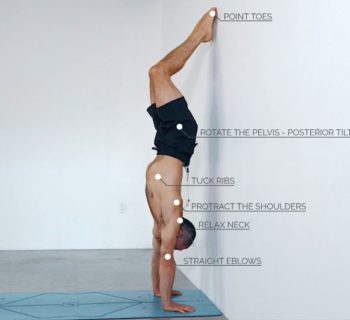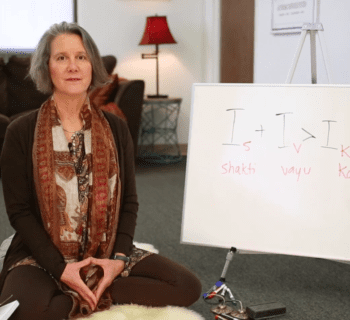Many of us who practice yoga have heard the quote from the ancient text Bhagavad Gita that “Yoga is a journey of the self, through the self, to the self”. Yoga is a means of self discovery that is all. Simple, right? Maybe not at first.
In another ancient text, The Yoga Sutras, Patanjali presents an eight-limbed path of yogic practices to guide us on that journey. The eight limbs include: how we interact with our world, how we treat ourselves, the physical practice of asana, breathing practices, sense withdrawal, concentration, meditation and finally, liberation. When we learn about the multi-faceted method of yoga from Patanjali we often come to a question: why is there so much attention on the body contorting, shape taking, third limb, asana?
In this reality, we happen to exist in a physical form, the human body. This form dictates certain rules of our experience, based on our five senses. Through the senses we receive information about our world, our environment, and other humans. But how do we receive information about ourselves? We begin with our senses and then cultivate a way to turn further and further inward. The body is gross rather than subtle, easy to detect and observe. As we move it around, take shapes, hold positions, challenge it’s mobility, we are able to receive information, and then interpret it.
As we turn our senses on ourselves, we begin to refine this method of communication, developing the vocabulary, establishing context for greater understanding. In attempting to create the shape of a posture, we look at our feet placement, use references of the room to adjust our alignment, refer to the parallel lines of our mats, and eventually depend only on our own bodies as visual reference. We use the focus of the gaze to align our attention and energy to the intention of the posture. Tuning in to the sounds of our breath helps to avoid distractions in our environment. Suddenly we no longer hear the breathing of another student, a door closing, or traffic on the street outside. Our breath becomes the only thing we hear. Like the act of an inhalation moves air from the space around us to the space inside of our lungs, so also do we move our attention from the spaces outside to the spaces within.
In the beginning, we identify most physical sensation as pain. But over time and with experience, we begin to refine our understanding of the feedback coming from our bodies. We learn the difference between the feeling of stretch in the muscles and the burning of strength exertion. We begin to categorize our sensations as tolerable and beyond our limits, as safe and risky. As we take ourselves deeper into our bodies, we notice sensation in the joints and develop understanding of what they mean. A sensation that is new is often frightening, so we pause and pay attention.
There is communication along the nervous system, linking the awareness of the mind with the sensations of the body. Each of us connect to ourselves in different ways. Like speaking different languages, down to the unique dialects, accents, slang. As we learn a new language, we often need to ask someone to speak slowly so that we can identify the subtleties of articulation, enunciation, and delivery. The same is true of the communication in our bodies. By moving slowly into the sensations we experience – by focusing our attention – we can gather more nuanced information. Over time we develop context from our previous experiences and we increase our vocabulary. We learn to not only identify the shouting sensations from deep stretches and long holds, but we learn to acknowledge the whispering sensations of the smallest movements in our deepest bodies. Where at first all we notice is our screaming hamstring, eventually we become aware of the sensation of the thigh bone rotating in the hip socket, or the gentle pull of the psoas drawing the inner thigh and low back towards each other, even the squeeze of our internal organs as we compress with a twist or a carefully placed foot.
So what is doing the learning? We often think of the mind as the preferred mode of understanding. But the mind itself is a tricky beast. How do you know what you know? This is a topic for another ten pages of contemplation! With regards to the inner communications of the body, the mind can often get in the way. As we try to think our way into postures – into our body – we close ourselves off to any information that doesn’t fit the mind’s current understanding of things. The mind cannot lead the way. It too has to sit in observation, as witness. At most it is an interpreter in the conversation, gathering data, providing reference, mapping experiences, giving background, building bridges, and filling in gaps. If it remains a supportive player in the conversation, it limits influence, and understanding is allowed to be fluid – to alter, adjust, and develop according to experience rather than pre-established beliefs. There is a deeper aspect of self that is learning.
If our internal communication system can be so refined as to receive the information coming from the body, it can also learn the subtler language of the mind, and emotions. As witness, we can observe the tendencies of our thinking mind and our emoting heart-space. As we struggle with the physical body, our mind also sends us feedback. It tells us we are not strong enough. It tells us our arms are too short. It tells us we will never be as good as that other practitioner over there. We turn judgment on ourselves, become angry or sad or frustrated. If we are using the same skills we developed with our physical self, we receive the information slowly, identify its source, its nature. Without surrendering to its shouting, we can soothe it to a whisper. Context develops around the communication: the sources of judgmental thoughts, the truth or untruth of our beliefs, whether or not the thoughts and emotional responses serve us, benefit us. Within the space of intentional, directed inner dialogue, we can make choices. We can identify who we really are and choose how we present that to the world.
The body is a tool to develop our communication skills. Those skills are directed ever deeper and deeper into ourselves. We journey through the body, the mind, the emotions to the true nature of ourselves. The self that is beyond the fluctuations of our environment, beyond the fluctuations of our bodies, the tendencies of our minds, and our emotional reactions. We become intentionally responsive rather than impulsively reactive. We trust ourselves because we know ourselves. From that space we can learn to eventually exist in our truest, purest self, the self that yoga calls Atman.
By Angelique Sandas











